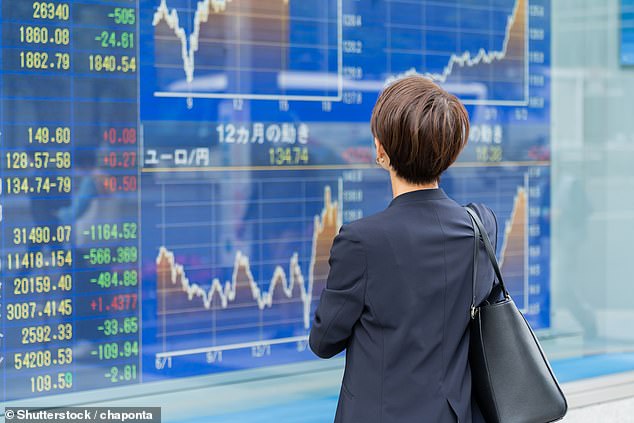It has been a long wait. Last Thursday Japanese shares finally pushed through their previous peak, reached more than 34 years ago.
The Nikkei 225 share index closed at 39,098.68, against 38,915.87 reached on December 29, 1989. It is probably the longest trough for share prices on any major market, ever. The Dow Jones did not recover from its peak in September 1929 until November 1954, so 25 years. The FTSE 100 index has done depressingly badly, but it did manage to scramble back to its end-1999 peak of 6,930 by February 2015.
So what should we learn from Japan’s experience, particularly in the light of the current AI-inspired market boom of US technology companies?
The most basic point is that there is a fine line between ‘animal spirits’ and ‘irrational exuberance’.
The first is that human condition famously described by John Maynard Keynes, where instinct and emotion come to dominate economic behaviour. The second is the title of a terrific book by American economist Robert J Shiller – published, as it turned out, at the peak of the US market in March 2000 – where investors become excessively optimistic and think that shares will continue climbing far beyond any rational justification. Animal spirits can be positive, for they help drive economic growth, while irrational exuberance always ends in tears.

Long wait: The Nikkei 225 share index closed at 39,098.68, against 38,915.87 reached on December 29, 1989
What happened in Japan in the late 1980s was beyond all reason. The long economic boom had led to an extraordinary asset bubble.
At one stage the land of the Imperial Palace in Tokyo was valued at more than the whole of California.
Japanese companies snapped up US trophy assets. Sony took over Columbia Pictures. Mitsubishi bought control of Rockefeller Plaza. Japanese investors also helped underpin US equities after the share crash on Black Monday in October 1987. By chance, a few days later, I was in Tokyo in the offices of Yasuda Fire and Marine, the insurance company that had recently bought, somewhat controversially, the world’s most expensive artwork, Sunflowers by Vincent van Gogh.
As we were looking at it, the chief investment manager was suddenly called away. When he came back, he was beaming. He explained it had been the Ministry of Finance (MoF) on the line. They and other institutional investors had been ‘guided’ by the MoF to pile money into US shares. ‘Japan,’ he said, ‘will save America.’
As it turned out, US shares did recover and the boom in Japan ran on for another two years. However, there was a global recession in the early 1990s and that depressed asset prices everywhere. The Ministry of Finance tried to slow any decline in Japan by getting institutional investors to buy shares. Eventually that failed, and the Nikkei hit bottom in 2009. Not only did the Japanese market have furthest to fall, the decline went on for longer than anywhere else.
Looking back, the euphoria of the late 1980s seems absurd. Yet at the time there were solid reasons behind it. Japan was the fastest-growing developed economy in the world, and its giant companies, Toyota, Sony and so on, dominated their markets. However, aside from its work ethic and technical excellence, it was also helped by demography. In the 1960s and 1970s it had a young population: lots of people of working age and relatively few retirees. Now, it is the reverse.
Actually, given the headwinds, the economy has not done too badly over the past 30 years. It has given its people a secure and healthy lifestyle, and they are among the longest-lived in the world. But it has taken a while for the strengths of its giant enterprises to be recognised and to drive the recovery in their shares.
Does the present state of US markets resemble that of Japan in the 1980s? To some extent, of course it does, They are certainly being driven by animal spirits.
But there isn’t the same overweening self-confidence. Market values may be frothy, but not yet irrationally so. As for the UK, I think we are in much the same situation as Japan was 10 or 15 years ago when it was fashionable to talk the country down. That will change. I hope we won’t see irrational exuberance but we could do with a bit less irrational depression.
But the immediate practical lesson from Japan is that moods can flip fast. The S&P 500 has done well, and is up 27 per cent on a year ago. But the Nikkei is up 42 per cent. There will eventually be a similar revaluation here. Just don’t ask me when.



